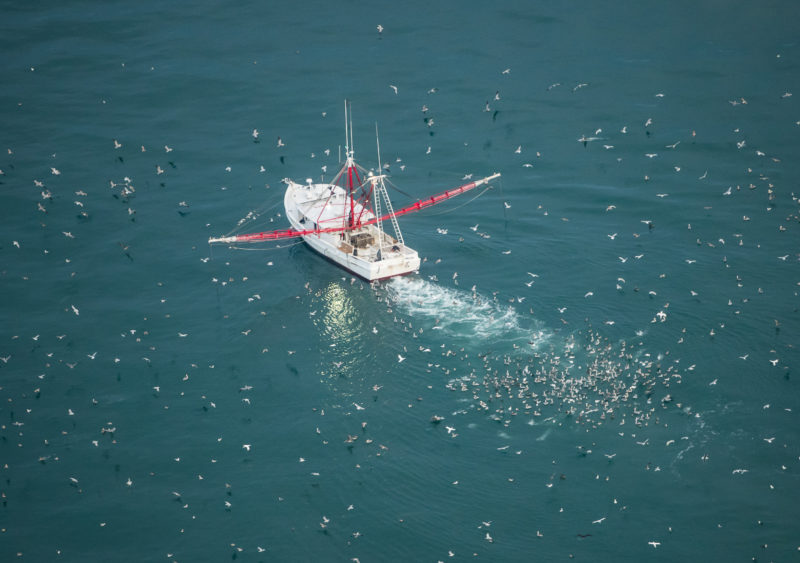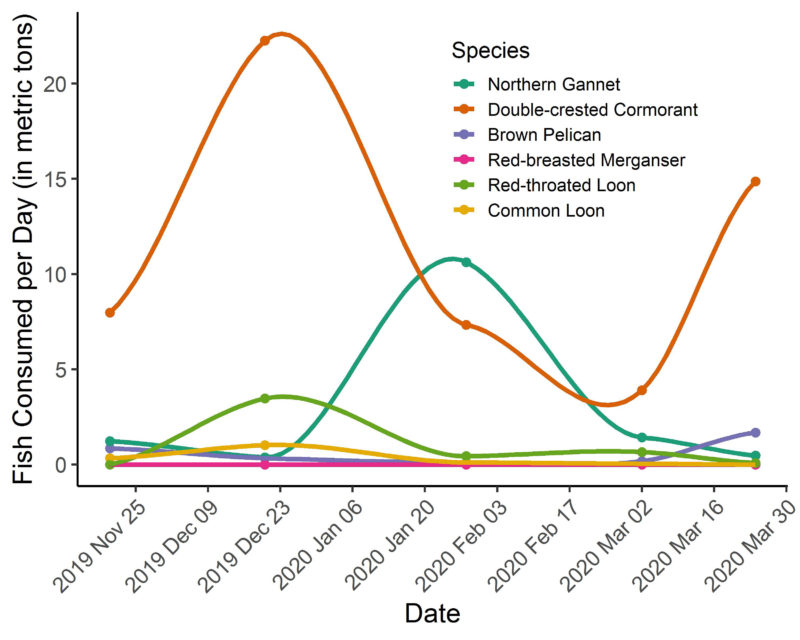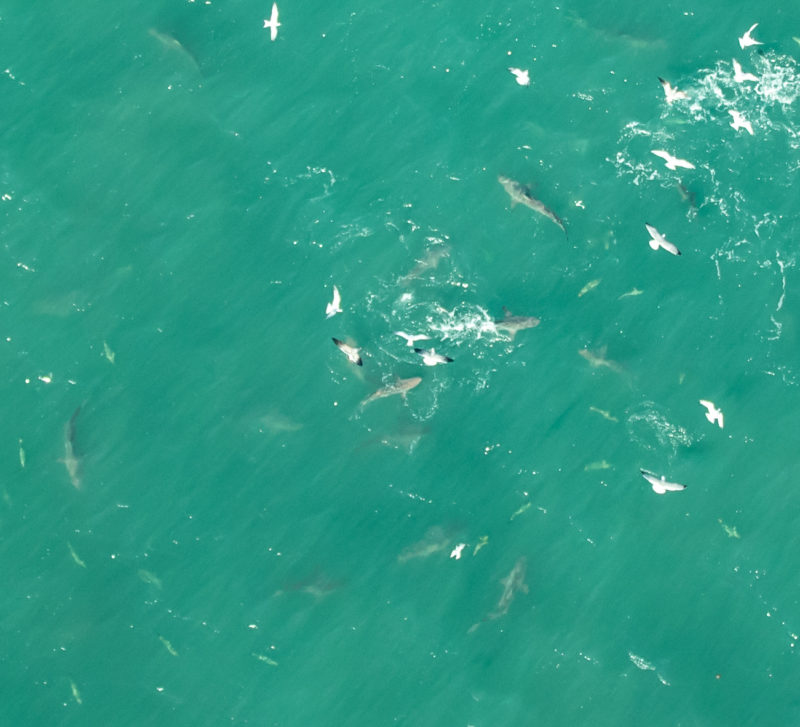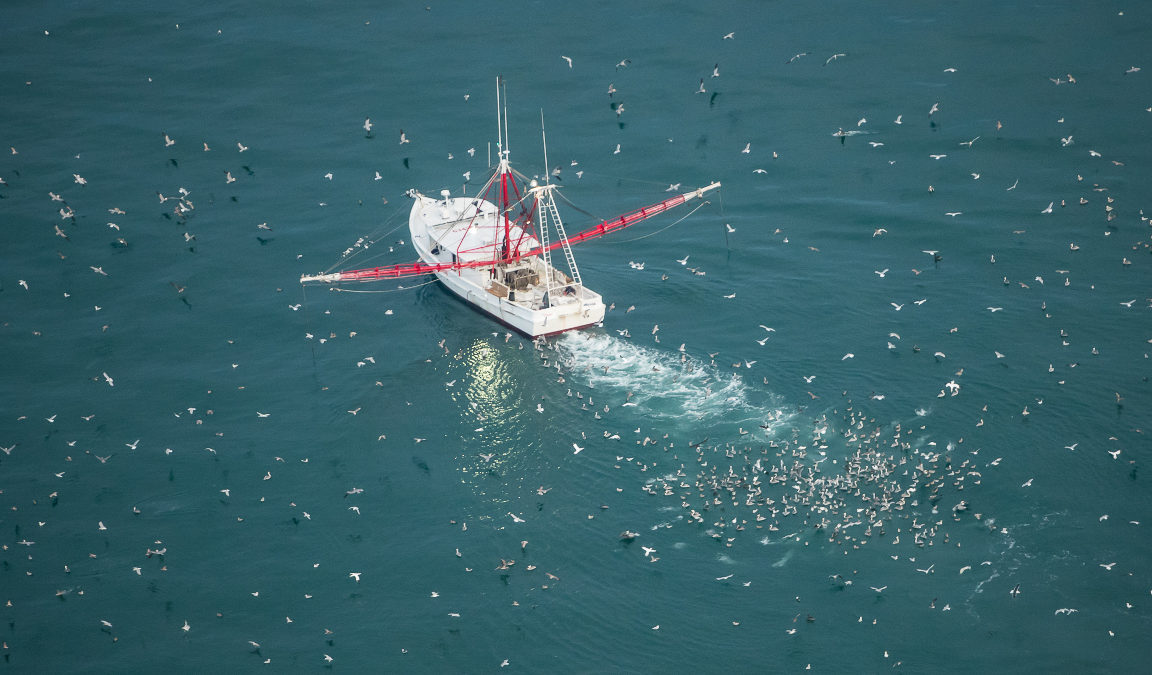Seabirds and fish along the coast of North Carolina

Conservation Champions
January 5, 2021
Eastern black rail elevated to Threatened status
January 11, 2021By: Bryan Watts
1/6/2021
The Center for Conservation Biology joined with the North Carolina Wildlife Resources Commission to estimate the number of cormorants and other seabirds that spend the winter months (October – March) within the sounds and near-shore waters of North Carolina. The project responds to concerns expressed by the waterman’s association about potential impacts of cormorants on the commercial fisheries. The double-crested cormorant population has grown exponentially during the post-DDT era, recolonizing historic nesting areas and expanding its range. Coastal North Carolina has emerged as a significant migration and winter site for the northeastern subspecies.

We estimated the population of cormorants (and other fish-eating seabirds) along the Outer Banks of North Carolina including near-shore (1 km seaward of beach) waters and sounds (Currituck, Albemarle, Pamlico, Core) by using distance sampling along a 650-km aerial transect. We used survey results to estimate the number of bird days, the energy demand of the sea-bird community and the fish demand in menhaden equivalents.

We estimated 424,370 seabirds were present within the near-shore and sound study areas during five survey flights. Double-crested cormorants and northern gannets accounted for 91% of the total, with brown pelicans, red-breasted mergansers, red-throated loons, common loons and razorbills accounting for less than 10% collectively.

The near-shore area accounted for 58% of the total estimate despite the fact that this area represented only 35% of the water surface within the study area. Seabird activity along the near-shore transect was concentrated around major inlets including Oregon, Hatteras, Ocracoke and Core. Within sounds, seabirds had a southern distribution with Pamlico and Core Sounds accounting for >98% of the total estimate. We identified 25 communal night roosts during the study period. These roosts supported a total of 412,459 double-crested cormorants and brown pelicans during the five surveys. Cormorants dominated the roost count with pelicans accounting for only 4% of the total.

We estimated that the study area supported 10,666,158 bird days during the study period with cormorants (73%) and gannets (15%) accounting for the majority. We estimated that the metabolic demand for the seabird community during the study period was more than 24 billion Kilojoules. The menhaden equivalent of this demand is 6,106 metric tons (13.5 million pounds). Cormorants accounted for 66% of this demand. During the study period, the total demand of the community exceeded 55 metric tons per day in the fall but declined to a low of 20 metric tons per day by early March. It should be noted that the study period ended before the northward passage of birds in the spring. It is likely that demand would have risen to a second high during April with the passage of cormorants and loons.
Estimated bird days (N), energetic demand (Kj) and menhaden equivalents (metric tons) for the entire study area and survey period by species:


CCB initiated the second season of aerial surveys in October of 2020. Surveys are scheduled to continue through early April of 2021.




